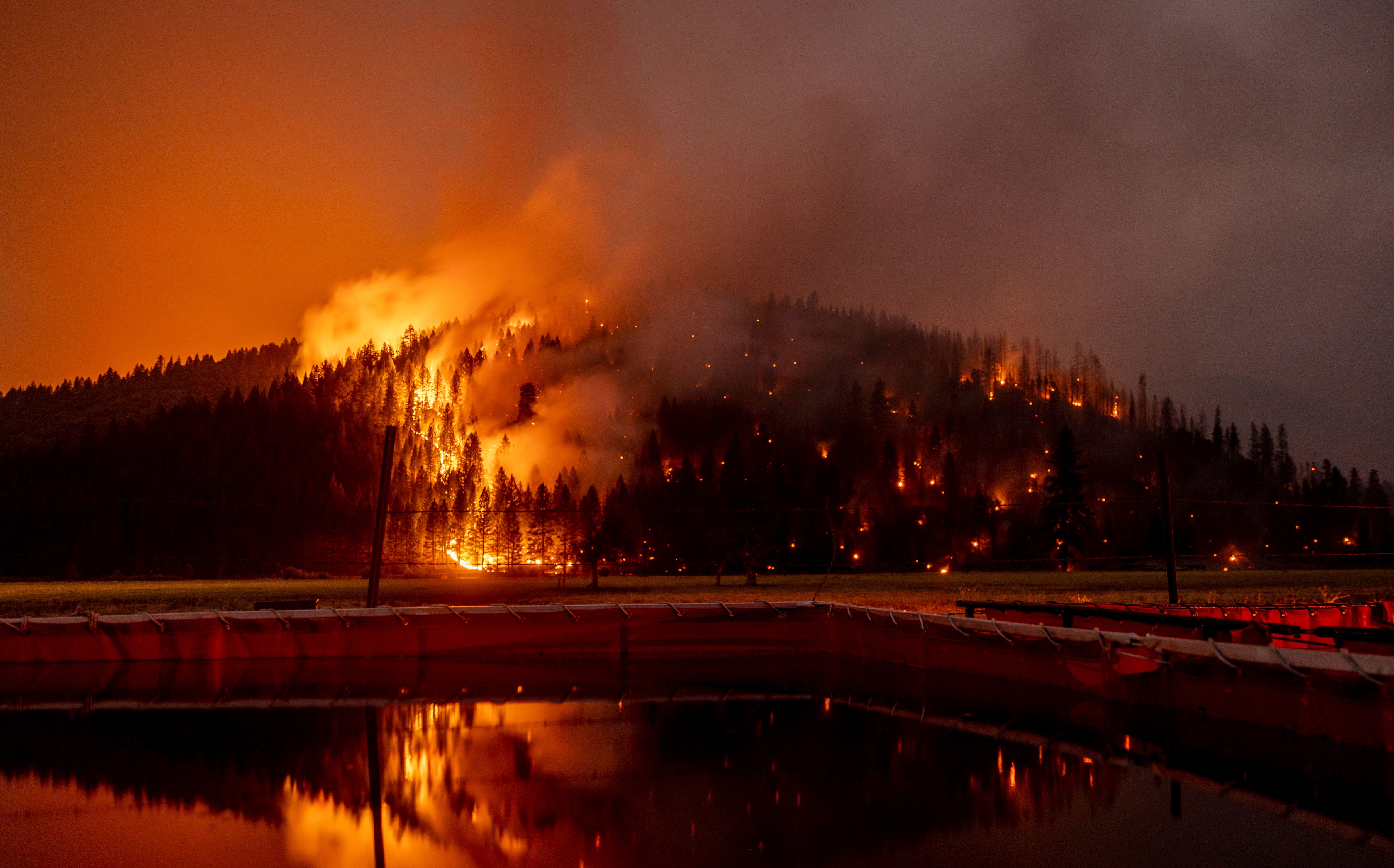Judge digs deeper into PG&E's suspected role in Dixie Fire
A Pacific Gas & Electric troubleshooter spent nearly two hours in federal court Monday fielding questions about whether the utility could have turned off the electricity sooner on a power line suspected of sparking the monstrous Dixie Fire two months ago

Your support helps us to tell the story
From reproductive rights to climate change to Big Tech, The Independent is on the ground when the story is developing. Whether it's investigating the financials of Elon Musk's pro-Trump PAC or producing our latest documentary, 'The A Word', which shines a light on the American women fighting for reproductive rights, we know how important it is to parse out the facts from the messaging.
At such a critical moment in US history, we need reporters on the ground. Your donation allows us to keep sending journalists to speak to both sides of the story.
The Independent is trusted by Americans across the entire political spectrum. And unlike many other quality news outlets, we choose not to lock Americans out of our reporting and analysis with paywalls. We believe quality journalism should be available to everyone, paid for by those who can afford it.
Your support makes all the difference.A Pacific Gas & Electric troubleshooter spent nearly two hours in federal court Monday fielding questions about whether the beleaguered utility could have turned off the electricity sooner to a power line now suspected of sparking the monstrous Dixie Fire two months ago.
The grilling came before a federal judge who is overseeing PG&E's criminal probation for a felony conviction after the utility's gas lines blew up part of a suburban neighborhood in the San Francisco Bay Area in 2010.
U.S. District Judge William Alsup has repeatedly hammered PG&E for creating dangers with its fraying equipment, igniting some of the deadliest wildfires in California causing so much death and destruction during 2017 and 2018 that the company negotiated more than $25 billion in settlements during a 17-month bankruptcy that ended last year.
The judge is now weighing whether he can impose more stringent conditions on PG&E before his authority expires when the company's five-year probation ends in late January.
PG&E “is a convicted felon that poses a safety hazard to California," Alsup told the utility's lawyers near the end of Monday's hearing. “My job is to rehabilitate you and that is what I am going to do until the last minute."
Alsup and a lawyer from the U.S. attorney's office spent most of the hearing trying to construct the timeline between when the PG&E troubleshooter first was sent out to a remote area of Butte County where the Dixie Fire is believed to have started and several hours later, when he first smelled smoke.
The identify of the troubleshooter, known as a “troubleman," was not revealed in court to in help shield him from potential threats.
Although no formal findings have been reached, PG&E has acknowledged to California power regulators that a tree leaning into one of its power lines may have started the Dixie Fire, which has scorched nearly 1 million acres to become the second-largest in state history.
The backlash to that initial disclosure, and numerous others in the last decade, prompted PG&E to announce an ambitious plan to spend at least $15 billion to bury about 10,000 miles (16,000 kilometers) of its power lines to reduce the chances of its equipment causing more fires.
In a statement, PG&E said it shares “the court’s focus on safety and recognize that we must take a leading role in preventing future catastrophic wildfires."
The troubleshooter testified that he tried to contain the fire by traversing the treacherous terrain and emptying a pair of 2 1/2 gallon fire extinguishers, as well as trying to dig breaks around the vegetation. He estimated those efforts started shortly after 4:40 p.m. July 13.
But the worker, who has been with PG&E for 10 years, first began to investigate a problem along the line around 12:30 p.m. that day after getting an non-urgent notification from the utility. He testified that he initially used binoculars to scan the area from well below the problem area, but couldn't see any evidence of a tree leaning into a power line or other obvious issues.
He said that prompted him to drive a circuitous route on unpaved, bumpy roads and a bridge and with no cellphone service and limited coverage for radio transmissions.
In his questions, Alsup pressed the troubleshooter on why he didn't go to a nearby PG&E switching station to turn off the power to the line after realizing he couldn't determine what was wrong. The troubleshooter testified that he could only take that action if he was ordered to do so by utility management because it would involve cutting power to customers.
A dam and tunnel in the area had already lost power on July 13, but the worker testified that he believed a railroad would have lost electricity had the power from that switching station been turned off, though he didn't know whether any households or businesses would have been affected.
Alsup also ordered PG&E to provide the names of dispatchers who communicated with the troubleshooter that day, for possible questions about the decision-making, saying it seemed obvious that the most prudent thing to do would have been turning off the power until more investigation could be done.
The judge accused PG&E of downplaying the risk posed by the power line suspected of causing the Dixie Fire. He said he has received information flagging that troublesome power line as the 11th most dangerous in PG&E's sprawling service territory.
PG&E has until noon Friday to provide the dispatcher names. The judge said he would assess whether to call them in to court.
Alsup made it clear that he didn't blame the troubleshooter for the Dixie Fire.
“You tried to stop the fire from the outset and I thank you for that," the judge told him.